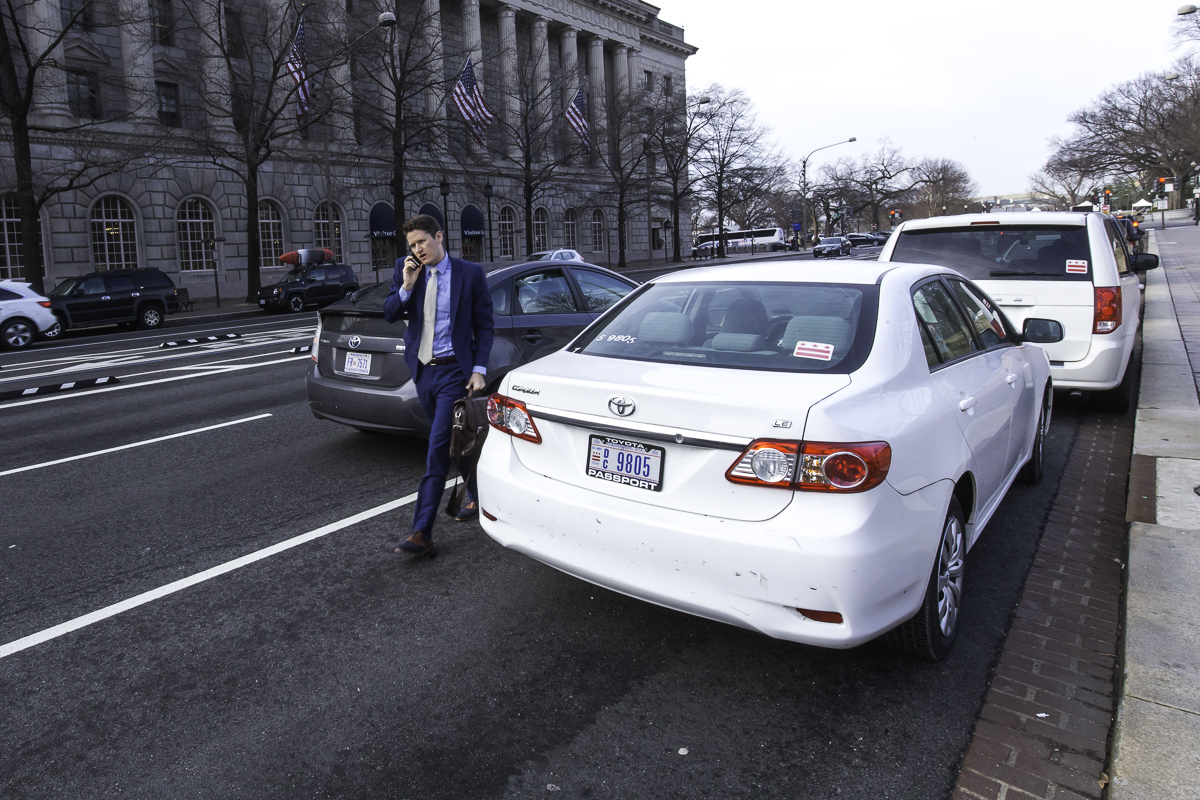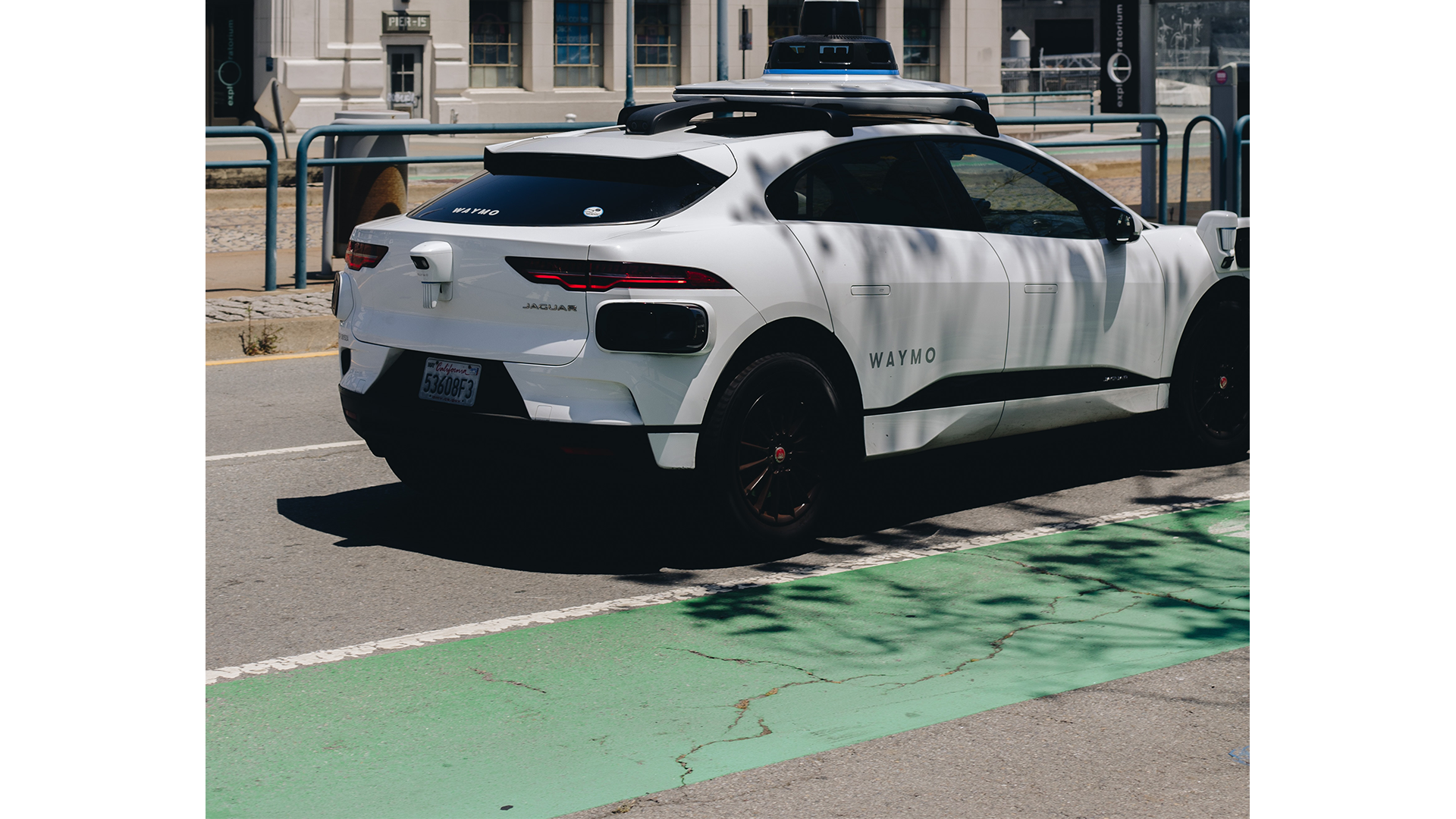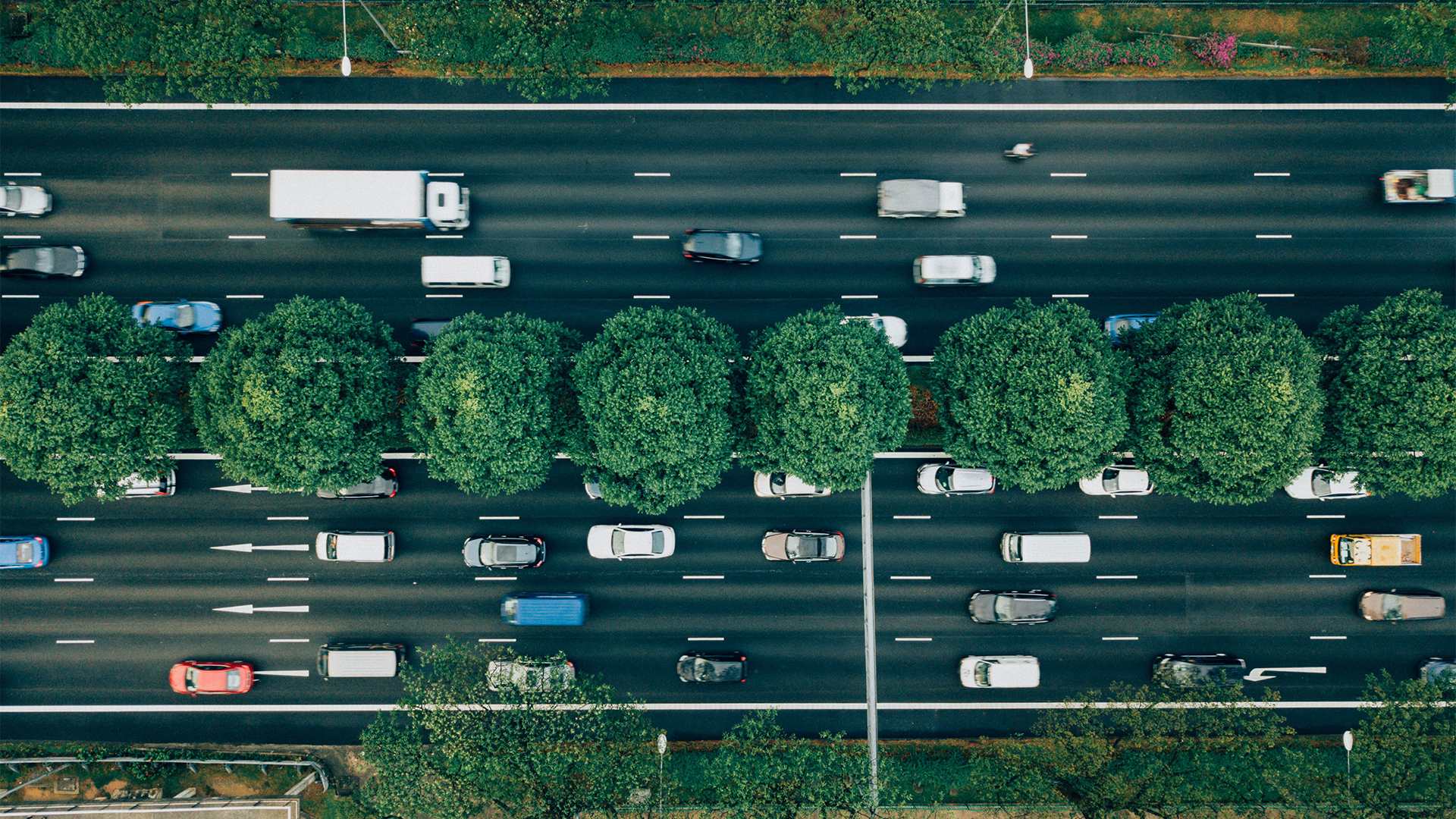November 29, 2023
In the not-so-distant future, a new way of travel is set to change the way we get around: driverless ridehail services. The story behind this evolution is a compelling narrative of innovation, ambition, and a major shift in transportation. So, how will we navigate the road ahead… when nobody is in the driver’s seat?
Driverless ridehail, also known as robotaxi, is a form of ride-sharing that employs automated (or driverless) vehicles. While driverless ridehail shares many similarities with traditional ridehail services, such as booking a ride through an app on your phone, the key difference lies in its name: the absence of a human driver. Instead, these vehicles rely on technology to navigate the roads.
Robotaxi services are not just part of our communities’ imagination. This technology is happening now. Via and May Mobility have provided on-demand automated Mobility as a Service (MaaS) in Arlington, TX since 2021. Their services are using backup safety drivers still, so they are not fully driverless yet. Waymo has been providing robotaxi service in Chandler, AZ since 2016 and now also in Phoenix and San Francisco.
How soon, and to what extent, will robotaxis become part of daily life in the communities where you live and work? We think its adoption and success will be largely predicated on six factors: equity & accessibility, safety, public perspective, cost, land use, and policy. Read on for more about each.

We must address equity and accessibility barriers in order to maximize the potential of driverless ridehail technology to reach and serve communities underserved by other forms of transportation.
Equity & Accessibility
Robotaxi has the potential to fill transportation gaps in underserved communities, creating new mobility opportunities for those who do not drive or who lack reliable access to public transportation. Like traditional ridehail, robotaxis can provide accessible and convenient transportation for individuals who have limited mobility or face challenges accessing traditional public transportation. It can also help with the first/last mile gap to cover areas where public transportation doesn’t run or in off-peak time periods when transit is less frequent.
Many of the equity challenges posed by robotaxis are the same as traditional ridehail. For example, what happens if riders don’t have a smart phone, a data plan, or a credit/debit card? What happens if robotaxi service providers don’t provide enough vehicles in underserved communities to meet their demand? What happens if robotaxi service providers don’t offer wheelchair accessible vehicles in their fleet? We must address these barriers in order to maximize the potential of this technology to reach and serve communities underserved by other forms of transportation. Local agencies may need to incentivize pricing, service availability, and technology access in order to fully realize the potential equity and accessibility benefits.
Safety
Is robotaxi safe? There are a few topics to discuss when thinking about safety for robotaxi services. First, as technology continues to advance, self-driving cars have the potential to reduce crashes caused by human error, but we still have a way to go. There are concerns about the way robotaxis currently interact with other vehicles, emergency responders, and people who walk and bike. Additionally, the technology must demonstrate the ability to operate reliably and safely under various environmental conditions.
Next, some travelers might like the idea of taking a truly private ride in a robotaxi because they eliminate the safety concern of an unknown driver. While others who tend to ride share with strangers may be hesitant to share a ride with a stranger in a robotaxi without the safety of a driver to buffer any unwanted interactions.
Finally, transportation engineers, planners, and public agencies also have a key safety role to play! Roadway design and policy play important roles in advancing widespread adoption of robotaxis. Without human decision-makers behind the wheel, it will be more important than ever to focus on reducing conflict points on roads and making the roads less complex. Pick-up/drop-off (PUDO) zones, separated bike lanes, and safe crosswalks will support safe and effective operations for robotaxis, as well as for human drivers. Fully self-driving vehicles also will need roads designed for safety for all road users, which include visible markings and signage.

The most effective partnerships involve frequent and open dialogue between the agency and service providers to regularly discuss observations or concerns, to quickly identify and address issues, and to share necessary safety information with the public.
Public Perspective
The widespread adoption of robotaxi is, in many ways, at the mercy of the public’s perception and likelihood to use the service.
Addressing public concerns requires clear communication, education, and transparency from companies and from government agencies. Public trust can be fostered through rigorous testing, data sharing, and consistent safety regulations.
Federal and state agencies require robotaxi companies to report crash safety data, in an effort to improve the understanding and transparency of these real-world tests and deployments. If you’re interested in learning more, you can check out the National Highway Traffic Safety Administration’s (NHTSA’s) AV crash reporting or the quarterly data reports required by the California Public Utilities Commission under its AV Passenger Service programs.
Local agencies can form partnerships with service providers to share data. The most effective partnerships involve frequent and open dialogue between the agency and service providers to regularly discuss observations or concerns, to quickly identify and address issues, and to share necessary safety information with the public.
Cost
There are two ways to think about cost for robotaxis: time cost (or the value of your time while traveling) and money cost (the cost of your fare).
A user’s time cost of travel in a robotaxi is expected to be the same or about the same as current human-driven ridehail services. The riders would still use an app and wait the same amount of time they would for regular ridehail. The amount of time it would take to get to the rider’s destination should also be about the same.
What about the financial side? Robotaxi is one of many modes of transportation. Commuters also have the option to take public transit, walk, bike, or drive themselves. The decision often comes down to cost. If it costs $2.50 to travel five miles on a bus or train versus $50 to travel those same five miles with ridehail, it’s a pretty safe bet this will affect many riders’ decisions on what mode of transport they will use.
But will robotaxi cost the same as traditional ridehail? Without the cost of human labor and with improved safety potentially decreasing insurance and liability expenses, fares could potentially decrease, making robotaxi more competitive with public transportation. NCHRP Report 924 puts it this way: “If autonomous vehicle (AV) developers can reduce their production and operating costs to a level significantly below those of conventional human-driven taxi services, there may be substantial increases in use of AVs as essentially chauffeured vehicles by the public.” There is nuance to this thought. If travelers become accustomed to paying higher fares for the convenience of ridehail (human driver or robotaxi), then companies might not be motivated to lower their fares to a level that is competitive to transit. But, by providing a mode that takes a traveler directly to their destination, and possibly at a lower cost than traditional ridehail, robotaxi has the potential to impact traveler behavior, which leads us into our next consideration: land use.

Robotaxi on its own is unlikely to fundamentally change the way cities are planned—because cities have already been working through many of these considerations with our current ridehail systems. One of the best things we can do at this point in time is think about the value of this new service.
Land Use
If robotaxi changes the way some people choose to get around, the impact to land use is the next logical question. For example, according to NCHRP Research Report 924, Foreseeing the Impact of Transformational Technologies on Land Use and Transportation, if robotaxi attracts riders that would have otherwise used public transportation or another mode, the increased demand for pick-up/drop-off (PUDO) zones will place a premium on incorporating safe and convenient PUDO areas in development site plans and streetscapes. Large apartments or multi-use buildings may need more formal PUDO zones for both robotaxi and traditional ridehail. Reduced parking demand from personal vehicles may free up valuable urban space for parks, housing, or commercial development. We can see great examples of these impacts when we consider how airport ridehail PUDO zones have evolved over the years, or how some new stadiums are being built with less parking and larger PUDO zones with more amenities for travelers.
However, robotaxi on its own is unlikely to fundamentally change the way cities are planned—because cities have already been working through many of these considerations with our current ridehail systems. One of the best things we can do at this point in time is think about the value of this new service. Are they going to help provide trips in off-peak times when transit isn’t an option? Or will they be the first-/last-mile connection to transit? Why are people using ridehail services today, both driverless and human-operated? Thinking about these questions will ready us for planning cities with different mobility options in mind.
Guidance & Policy Development
Information sharing across the industry is vital for a smooth transition to robotaxis. Lessons learned from shared mobility projects can provide valuable guidance. Everyone involved, from government to technology companies, has a part to play in shaping the safe, accessible, and efficient future of this mode of transportation.
This guidance will set the foundation for policy changes that account for robotaxi services. The primary policy challenges concerning robotaxi technology revolve around safety regulation at the federal and state levels. Local agencies will also play a pivotal role in working alongside technology companies to create smart and safe urban environments. Agencies need to start monitoring travel patterns changes and reevaluate their land use requirements to adapt to changing travel behaviors and community needs. Also reevaluate operations and maintenance plans to keep roadway facilities well-maintained to benefit human drivers, as well as automated vehicles like robotaxis.

By paying attention to the evolution of robotaxi and being proactive in adapting planning and policies, we can shape a smarter, safer, and more efficient urban environment for all.
We’re All in the Driver’s Seat
The era of driverless ridehail is fast approaching. While it promises numerous benefits, it also presents challenges that need to be addressed through policies and infrastructure development. We all have a responsibility to continue to educate ourselves for safe streets and safe human behavior.
By paying attention to the evolution of robotaxi and being proactive in adapting planning and policies, we can shape a smarter, safer, and more efficient urban environment for all. The future of transportation is arriving, and it’s up to us to help guide its course. As the robotaxi industry continues to grow, it will be fascinating to see how it shapes our cities and the way we move within them.
If you want to learn more about how to plan for these changes, you can check out these resources:
- NCHRP Report 924, Foreseeing the Impact of Transformational Technologies on Land Use and Transportation, is a valuable resource for state and local agencies to understand the implications of driverless ridehail and other emerging technologies on traveler behavior and land use.
- Baltimore Metropolitan Council (BMC) created guidance for local agencies on how to plan for connected and automated vehicles, including driverless ridehail.
- North Central Texas Council of Governments (NCTCOG) created an AV Hosting Handbook for its local agencies.
These are just a few of many ways driverless ridehail may change the way we think about transportation planning and engineering. We invite you to reach out to us if you want to know more about our work on this topic or have any questions!
